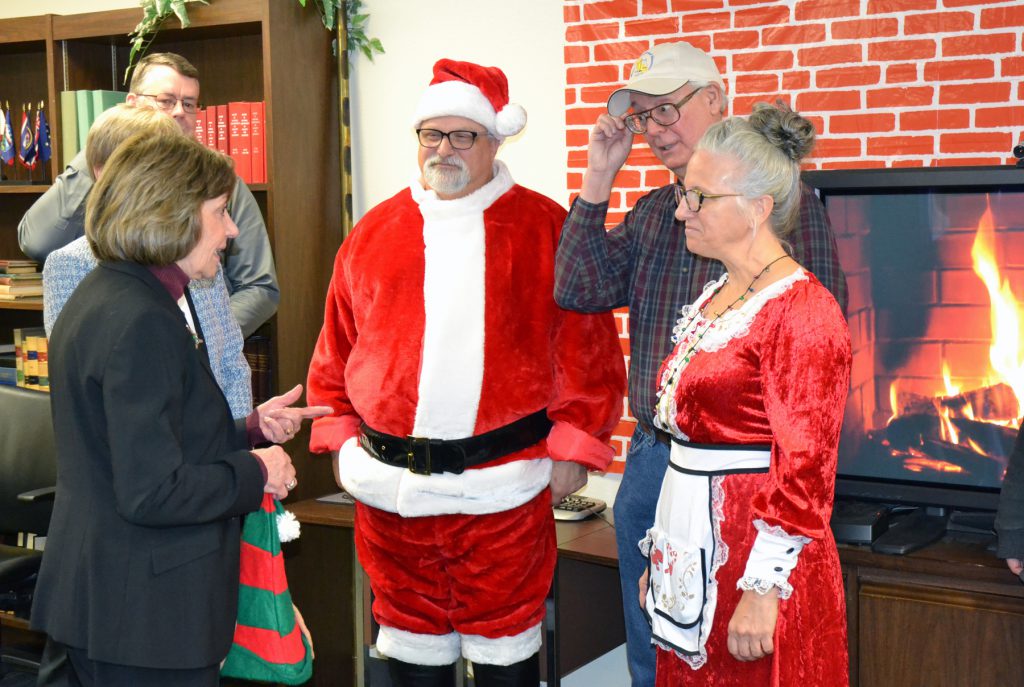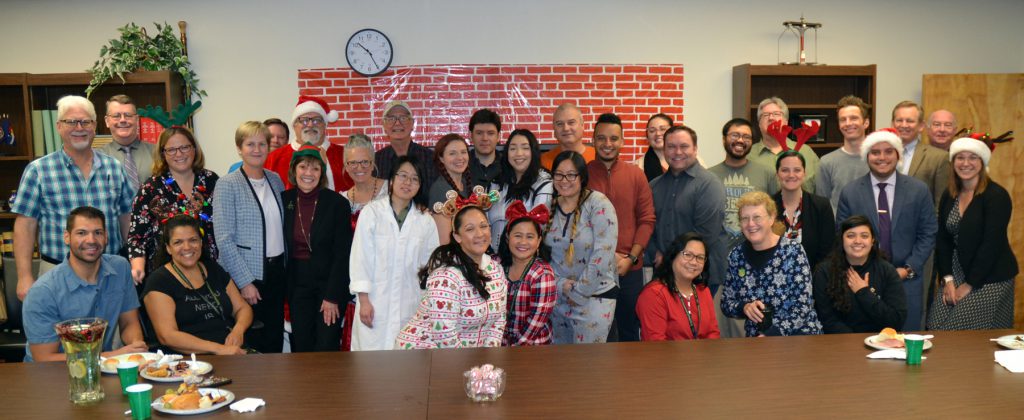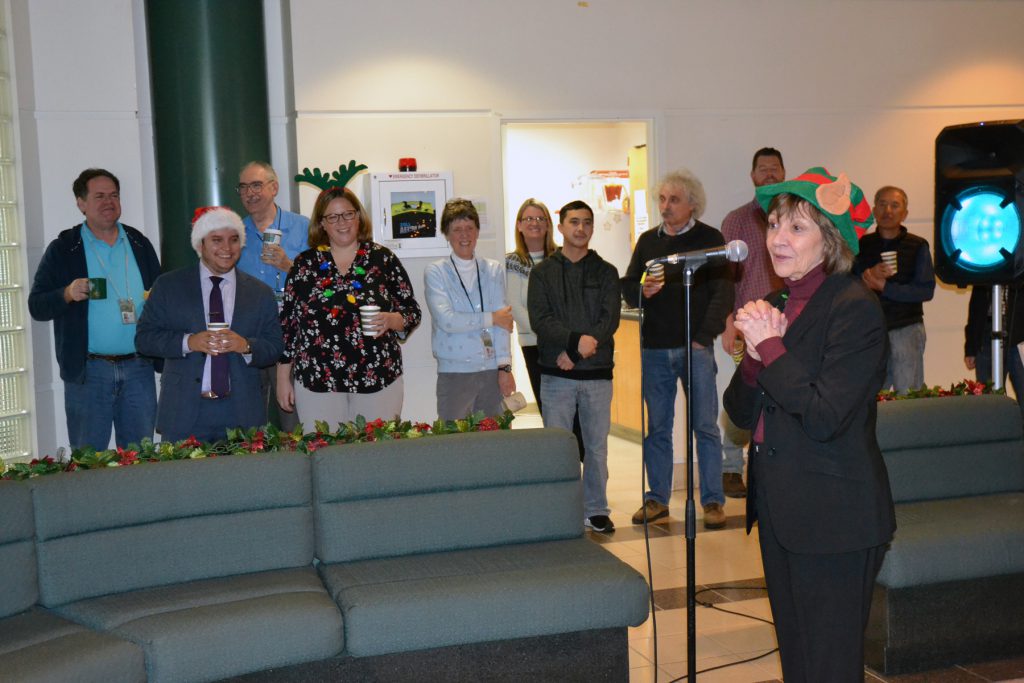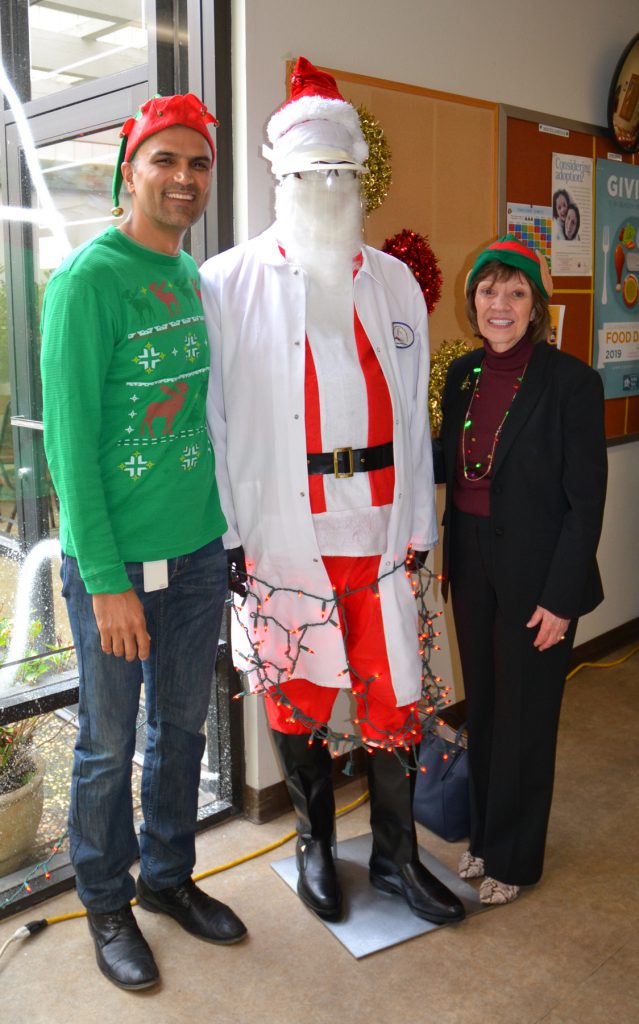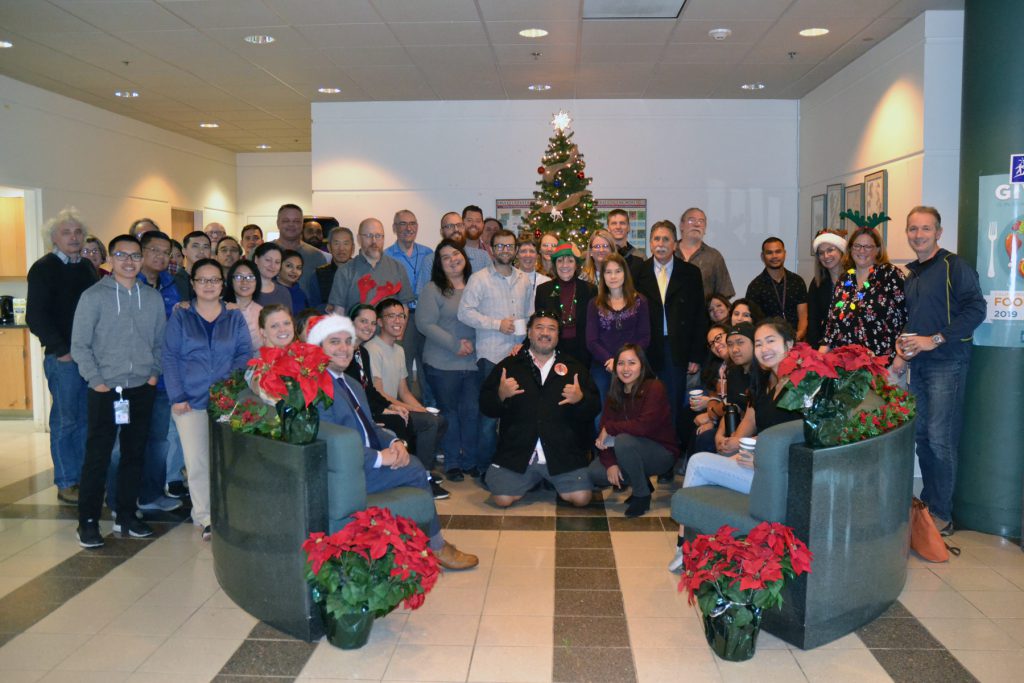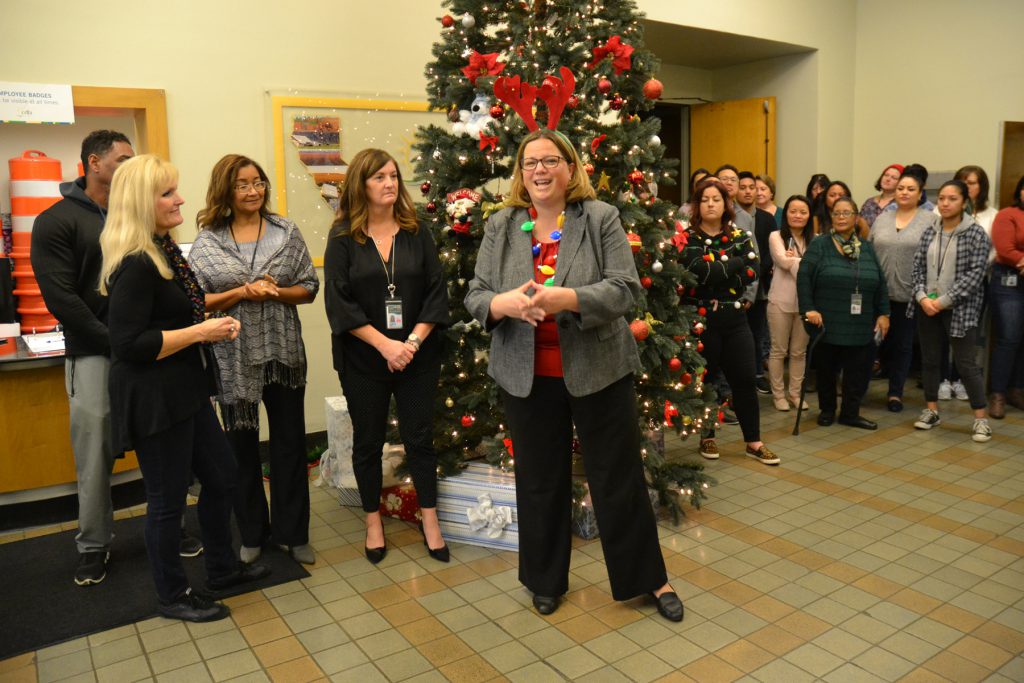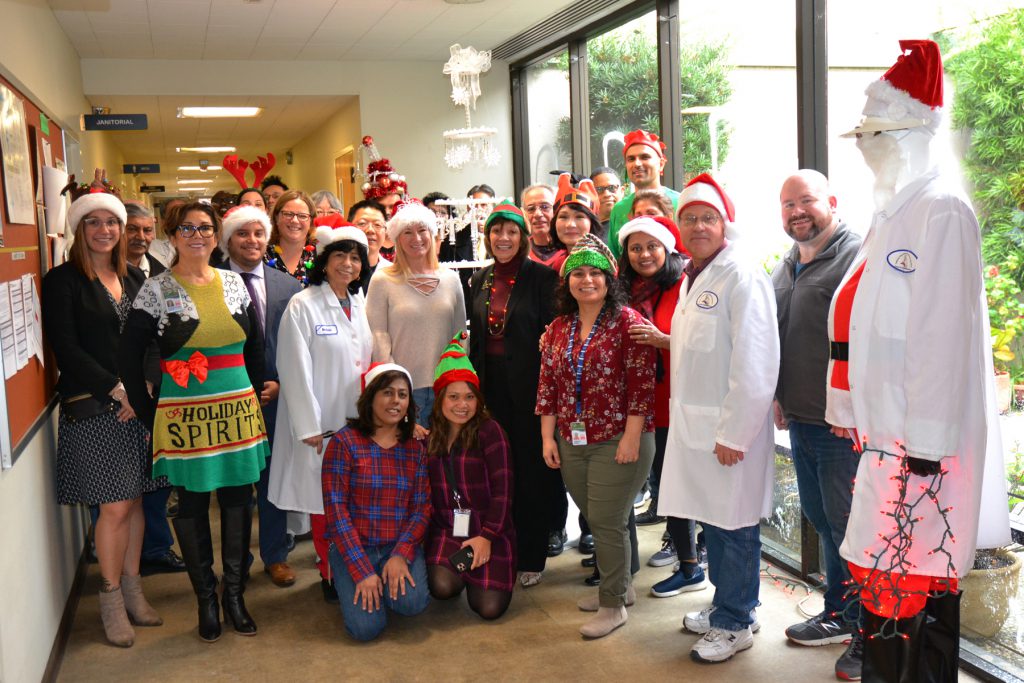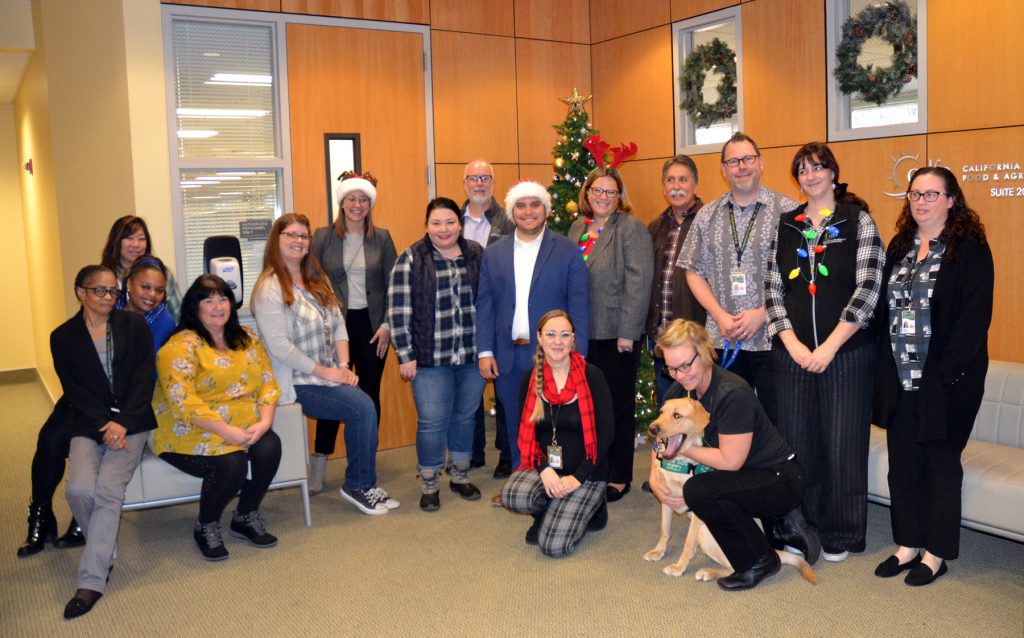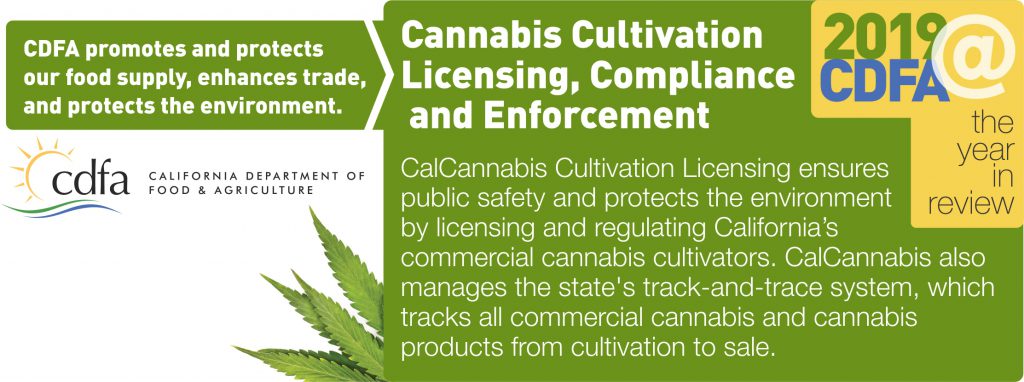




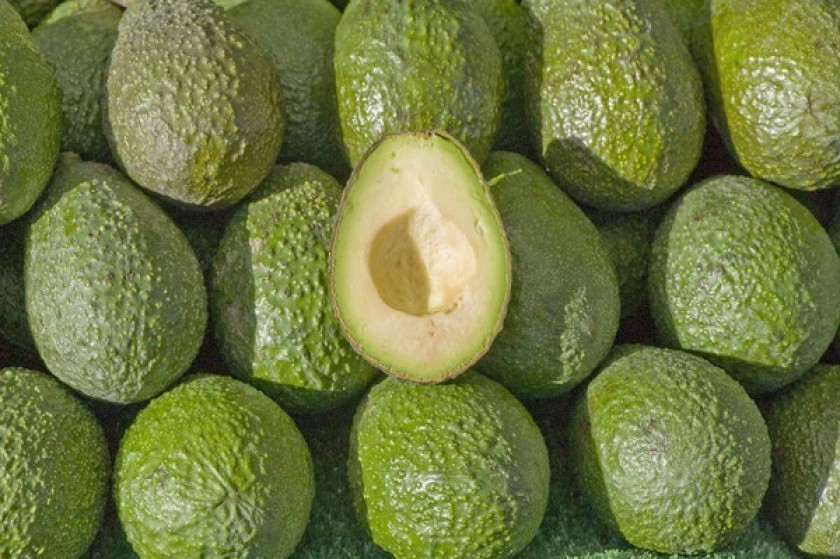
By Alexia Elejalde-Ruiz
Imagine bananas that never go bad. To Aidan Mouat, chief executive of Chicago-based Hazel Technologies, it’s not so far-fetched.
His company makes a product that extends the shelf life of all sorts of produce — avocados, cherries, pears, broccoli — by slowing the chemical process that causes decay. Some of the world’s largest growers are using it to send their produce longer distances or reduce how much retailers throw away, and Mouat said a consumer version could be next.
“I envision, in the next 18 months or so, literally selling a banana box to consumers,” Mouat said from Hazel’s growing office space at University Technology Park, a start-up innovation hub on the Illinois Institute of Technology campus. “You keep it on your counter, put a [Hazel] sachet in there once a month, and you have bananas that last forever.”
Hazel Technologies is part of a new wave of innovation seeking to slow spoilage of produce and other perishables, which experts say is a key weapon in the battle against massive food waste in the United States.
As much as 40% of food — and nearly half of produce — produced annually in the U.S. goes uneaten, according to government estimates. Although the waste happens throughout the supply chain, the vast majority of the $218 billion worth of uneaten food annually gets tossed at home or at grocery stores and restaurants, according to ReFed, a Berkeley-based nonprofit that seeks solutions to reduce food waste.
The average American family throws away 25% of groceries purchased, costing a family of four an estimated $1,600 annually, ReFed says. U.S. supermarkets lose $15 billion annually in unsold fruits and vegetables, according to the U.S. Department of Agriculture. Meanwhile, uneaten food is the No. 1 occupant of landfills and squanders the water and energy used to grow and transport it.
Routing unused food to charities or upcycling can help keep it out of the garbage, but solutions to prevent waste at the source, such as through shelf life extension, “have some of the greatest economic value per ton and net environmental benefit,” said Alexandra Coari, director of capital and innovation at ReFed.
Spoilage prevention packaging has the potential to avert 72,000 tons of waste and 330,000 tons of greenhouse gas emissions, plus save 44 billion gallons of water a year, she said.
Technology that extends shelf life has been around for a long time, but there has recently been a “huge uptick” in innovations that expand the options, helping to drive the $185 million in venture capital invested in combating food waste last year, Coari said.
“It’s the early days,” Coari said. “We are excited to see where they can go.”
Hazel Technologies, founded in 2015 by a group of Northwestern University graduate students, has raised $18 million so far, including nearly $1 million in grants from the U.S. Department of Agriculture. It has 100 clients in 12 countries in North and South America.
The company makes small sachets — about the size of a salt or pepper packet packaged with to-go orders — that can be thrown into a box of produce to shut down the food’s response to ethylene, a chemical naturally emitted by many fruits and vegetables that triggers the loss of firmness, texture and color. The sachets continuously emit a small amount of an ethylene inhibitor, changing the atmosphere in the storage box but not the food itself.
Although ethylene management technology isn’t new, Hazel’s sachets are gaining fans because they are easy to use, whether in okra fields in Honduras or avocado packinghouses in the U.S., Mouat said. In addition to ethylene inhibitors, the company is working on antimicrobial reactions and will soon bring to market antimicrobial liners for packages of berries, to ward off the white fuzz.
Hazel’s goal is to improve the delivery of decay-stopping technologies by incorporating them into packaging, not only for produce but also for cut meats.
“We can extend the shelf life of practically any perishable by targeting the specific mechanism that causes it to go bad and integrating it with the packaging that already exists today,” said Mouat, who graduated from Northwestern with a doctorate in chemistry in 2016.
How much Hazel can extend the shelf life depends on the type of food.
For example, tests show an unripened pear gets an extra seven to 10 days after being treated with a Hazel sachet, plus an extra three to four days once ripe, Mouat said. Pilot testing being done on packaged chicken, beef, fish and pork suggests the sell-by date could be pushed back by four to six days, he said.
Mission Produce, the largest grower, packer and shipper of Hass avocados in the world, found that ripe avocados that normally would have to be sold in two to five days once hitting retail stores lasted seven to 10 days if they were treated with Hazel’s product, said Patrick Cortes, senior director of business development at the Oxnard company.
Once they’d achieved maximum ripeness, which normally means they’d turn black inside within a couple of days, some treated avocados kept at room temperature were still good when they were sliced two weeks later, he said.
Mission, which has developed a branded product with Hazel called AvoLast, has completed one retail trial with the product and is about to launch two more, as well as a food service trial, Cortes said. So far he prefers it to other shelf life extension treatments the company has tested because it is easy to use.
“You just throw it in the box,” Cortes said. “It gives us the flexibility to treat the fruit at various parts of the supply chain, whether at packing or at ripening.”
Mission is investing in the technology to help retain the freshness of avocados that travel long ocean journeys and help U.S. retailers save money by throwing fewer avocados away, Cortes said. On average U.S. retailers waste 5% of avocados, which also has an environmental impact, he said.
“We took a retailer we sell to and said, if we can reduce their [wasted produce] by 2% it would be the equivalent of powering 26 homes for a year,” Cortes said. “It just makes perfect sense to do the right thing.”
It also makes business sense, and investors are starting to take notice, said Coari at ReFed.
Goleta, Calif.-based Apeel Sciences, which has created an all-natural coating that gives produce a spoilage-resistant skin, last year landed a $70-million funding round that included Andreessen Horowitz, a prominent venture capital firm that has backed some of the biggest tech companies.
Apeel installed its coating equipment along Kroger’s avocado supply chain and this year rolled out longer-lasting avocados at hundreds of Kroger stores. It is also starting retail tests on asparagus, which are the produce industry’s biggest carbon emitters because their shelf life is so short they have to travel by air.
Other movers in the industry include Massachusetts-based Cambridge Crops, which makes an edible protective coating from natural silk proteins and recently got $4 million in seed funding from MIT’s venture fund; and British firm It’s Fresh, a maker of ethylene filters that last year got a $10-million infusion from AgroFresh, a longtime maker of freshness products, which bought a 15% stake in the company.
Yet adoption by the industry has a long way to go. Suppliers pay for the technology but the benefit is felt downstream at retail, complicating the business model, Coari said.
It is unclear whether shoppers will be willing to pay more for longer-lasting produce or will respond to branding of products long considered commodities, she said.
It’s also unclear how much more it might cost them. Prices vary so much because of weather or other production issues that consumers may barely notice, Hazel’s Mouat said. Apeel, in its pilot with Kroger, found no price increase was necessary because sales increased and waste declined.
In addition, it can be complicated and expensive to introduce shelf life extension technologies into the supply chain if it involves installing equipment or training seasonal workers.
That’s where Hazel has a leg up. Growers and suppliers that have tried numerous alternatives say they have been attracted to the flexibility and user friendliness of Hazel’s technology.
“It has to be simple to use or may not be worth doing,” said Davis Ortega, director of packing operations at Orchard View Cherries in Oregon.
Orchard View conducted a small trial with Hazel two years ago and this year has more than doubled its use, primarily for cherries embarking on ocean trips to Asia that can take up to 23 days.
It found cherries treated at the end of the packaging process were firmer than untreated cherries after 20 days, and had fewer indentations and greener stems. Consumers often reject produce that doesn’t look perfect, even if it is still perfectly good, so aesthetics matter.
“It was definitely noticeable. The fruit looked fresher, more appetizing,” Ortega said. “It allows us to feel more confident in where we can ship our product.”
That could mean exploring new markets, such as India and Africa, which is a 35-day transit.
At WP Produce in Miami, the largest grower and importer of tropical green skin avocados in the Western Hemisphere, Vice President Chris Gonzalez hopes using Hazel will allow it to increase market share in the United States.
Tropical avocados, currently less than 1% of the U.S. avocado market, have a shorter shelf life than the much more common Hass avocado, although they last longer once they are cut open because they don’t oxidize as fast, he said.
Treating tropical avocados with Hazel adds four to five days of shelf life, and “that’s going to help us out shipping to Malaysia, to California, to the West Coast,” said Gonzalez, whose company grows avocados on 500 acres in the Dominican Republic. As U.S. consumers get to know the larger, firmer alternative to Hass, he believes there will be fans, especially among millennials who like to try new things.
“There’s a lot of market share to be gained there,” Gonzalez said.
Mouat declined to disclose Hazel’s revenue but said sales have grown threefold over the last year. The company, which is not yet profitable, started the year with 14 people and will more than double to 30 employees by the end of the year. Hazel also will have expanded its office space by more than a third, to 14,000 square feet, by year’s end.
Four of the five original founders — who were graduate students in engineering, law and chemistry when they met at an interdisciplinary course at Northwestern’s Farley Center for Entrepreneurship and Innovation — occupy Hazel’s C-suite. In addition to Mouat, there’s Chief Marketing Officer Pat Flynn, Chief Intellectual Property Officer Amy Garber and Chief Technology Officer Adam Preslar.
The company has grand ambitions.
India, for example, grows more mangoes than anywhere in the world but exports only 10%, leaving many to go to waste, Mouat said. Using Hazel’s sachets to extend shelf life in such countries that lack stable supply chain infrastructure could allow them to sell their fruit to new markets without investments in pricey equipment, he said.
Mouat also hopes to create a consumer-focused sachet that people can throw into the veggie crisper in the fridge, or the aforementioned banana box.
And then there’s the booze.
An irony of operating an anti-food-waste tech company is that food is tested in a lab to ensure the technology works, creating waste of its own.
Mouat has addressed that by taking discarded passion fruit and making a sour IPA, and discarded bananas and making a banana rum. He has a fridge full of dragon fruit and is considering making a dragon fruit beer.
The company sends bottles to investors and customers as gifts for the holidays, but they have proved so popular that Mouat is looking into working with distillers or brewers to transform Hazel’s food waste into alcohol.
“There is a surprising amount of appetite among our investors to add it as a legitimate arm of the Hazel business model,” he said.
Link to story on the Los Angeles Times web site
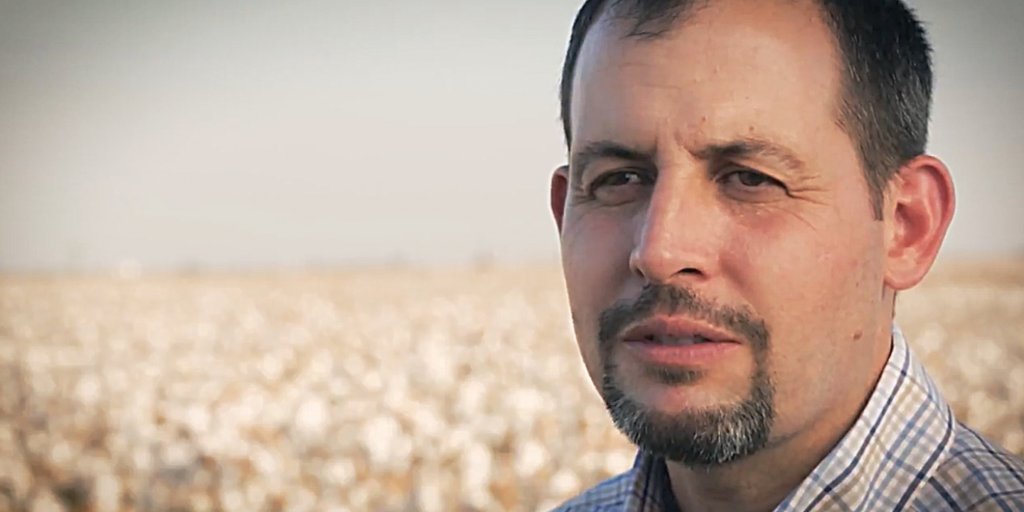
By Cannon Michael
In California, I think we in agriculture sometimes feel like there’s a lot of things stacked against us.
We face a lot of regulatory pressure that many of our neighbors don’t feel, and that can push us more into an insular nature. We have done a great job feeding and clothing people, but the consumer is disconnected from who is producing their products, further increasing the sense of isolation.
I was in that space.
Over time, I got involved in industry groups and served in different leadership roles. I started broadening my scope and got into water, starting on our local water district.
It started to get to me that there are a lot of negative outcomes because of this polarized nature. Agriculture vs. urban vs. environment, I always felt was a false narrative because at my core, I’m a Californian.
All of us are united in that we live in this amazing state of diversity that we appreciate. California has amazing agriculture, amazing nature and amazing communities.
We’re seeing a lot of family farmers getting out of the business and a lot of outside players coming in and expanding. For me, I wanted to find pathways toward better solutions. In meeting a lot of different people throughout the state and listening to their thoughts, this exposure to other groups and ideas made me realize that we’re in this together.
As passionate as I am about being a farmer and what I do, there’s people on the other side that are equally as passionate. We’ve got folks in our camp who are not always proactive and productive and, learning from my NGO friends, a lot of times they recognize some folks on their side can have a negative effect as well.
So, how do we come at problems with more of an open-lens approach? How do we look through each other’s viewpoints and try to craft solutions that are ultimately going to be more durable?
I’ve invited different groups to the farm to have discussions on the landscape, and to show people what we do. Getting to know each other in a different setting is really important in seeing firsthand what the realities are. People can paint issues in very simplistic ways, but it’s harmful in ways because it doesn’t really give the true picture and it doesn’t help drive discussions forward.
I’ve hosted a number of dinners on our farm, and the things that have come out of those dinners have been really valuable, mainly just the relationships. There comes a point where we all need to work in the middle to get things done.
I believe that we can craft solutions with the mindset of: What is the California we want to leave to the next generations? That to me isn’t a California that is agriculture only or environment only or urban only. We have a duty—all of us—to figure out: What is the California we’re going to work for? And how do we leverage each other’s strengths?
We don’t know a lot of things about each other’s passions and we don’t always see things through each other’s lenses. But there are super-talented people in California who are solution-oriented.
Every time I’ve taken the effort to engage with other groups, I’ve never had a bad experience. We haven’t always come away agreeing, but I think there’s always a lot of respect. There’s a lot of great, willing partners who can work together to craft durable solutions for our great state. A lot of different farms, agencies and NGO groups can come together to look at actual solutions and try to be creative to leverage dollars. There are positive outcomes that we can get to. There are some positive examples out there and I think there can be a lot more if we find ways to come together.
A farmer-centric point I would make is whatever your passion and whatever your drive is, we actually do have to be fueled by a farmer somewhere every day. It is important for me, as a California farmer who does labor under a lot of these regulations, that people know it is getting much harder to endure some of this.
We are proud to be California producers and hope that consumers will take the time to choose California-grown when possible. You can be assured the product will be produced with a high level of regard for workers and the environment. Support California agriculture where you can.
(Cannon Michael is president of Bowles Farming Co. in Merced County. This commentary is adapted from remarks delivered at the 2019 Flood-MAR Public Forum in Sacramento.)
Link to item on the California Farm Bureau Federation web site.
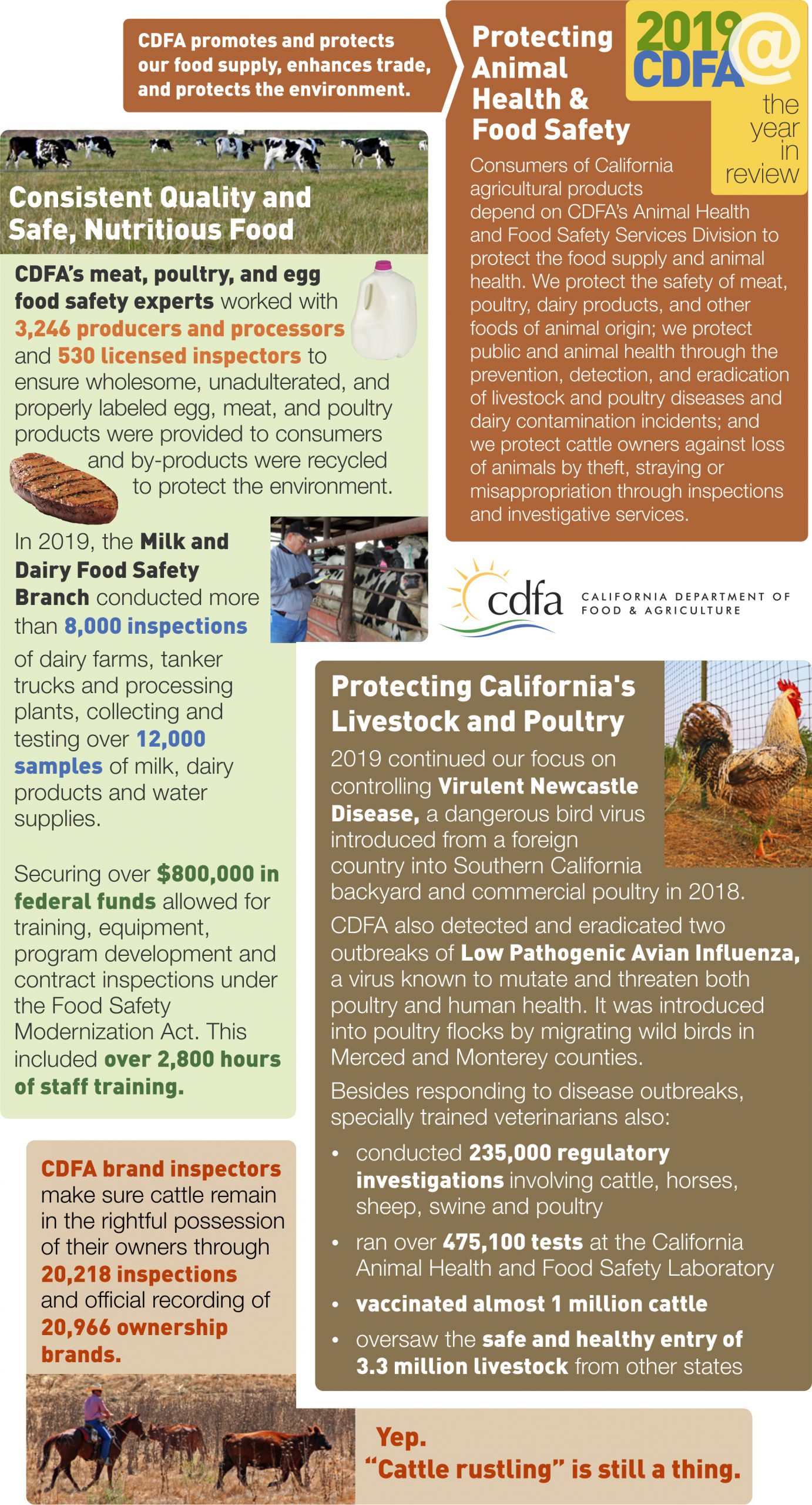
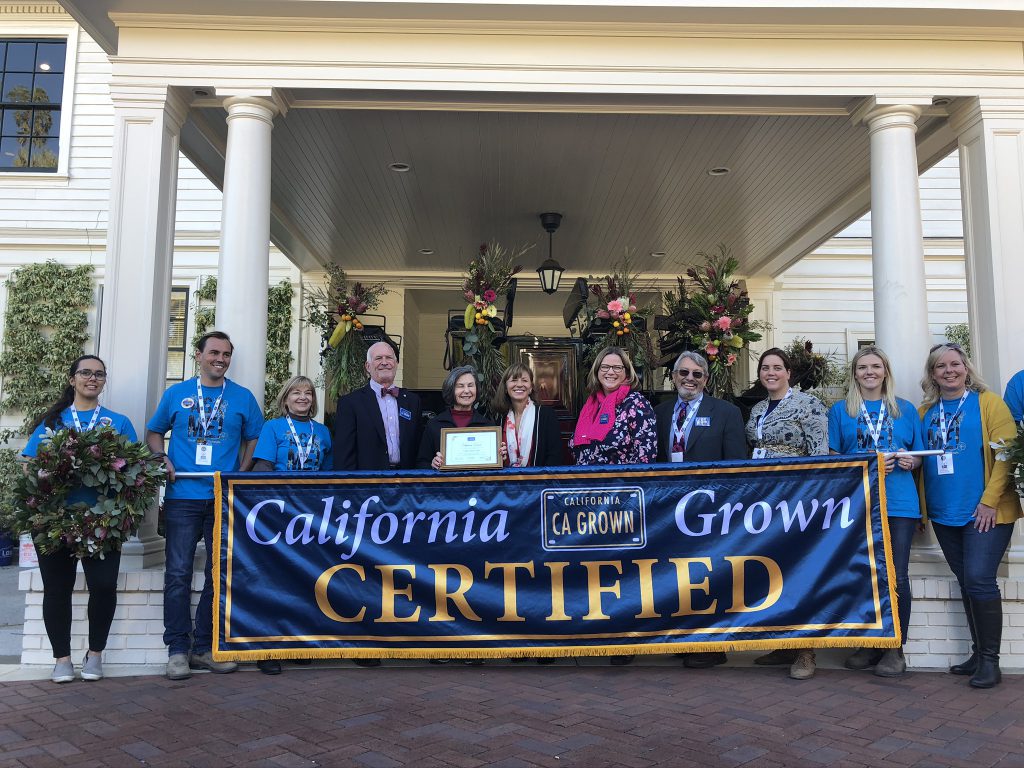
By CDFA Undersecretary Jenny Lester Moffitt
Like millions of Californians and people around the world, I have celebrated New Year’s Day by watching TV coverage of the Rose Parade, a time-honored tradition started in 1890 by the Valley Hunt Club.
The parade celebrates the beauty of a new year with carriages, floats and so much more – all adorned with flowers. On Tuesday, I had the privilege of joining the California Cut Flower Commission and many flower farmers in certifying entries as California Grown, meaning they were comprised of at least 85 percent California-grown flowers.
The Rose Parade is a tradition that brings people together. And that’s what California agriculture does, as well. The farmers and ranchers in this state bring communities together.
Yes, farmers and ranchers provide the food, fiber and flora we all depend on. But they provide so much more. They provide jobs and economic opportunities. They provide the foundation for so many of our communities. More importantly, they provide a legacy and tradition of taking care of the land that sustains us. That is what California Grown symbolizes.
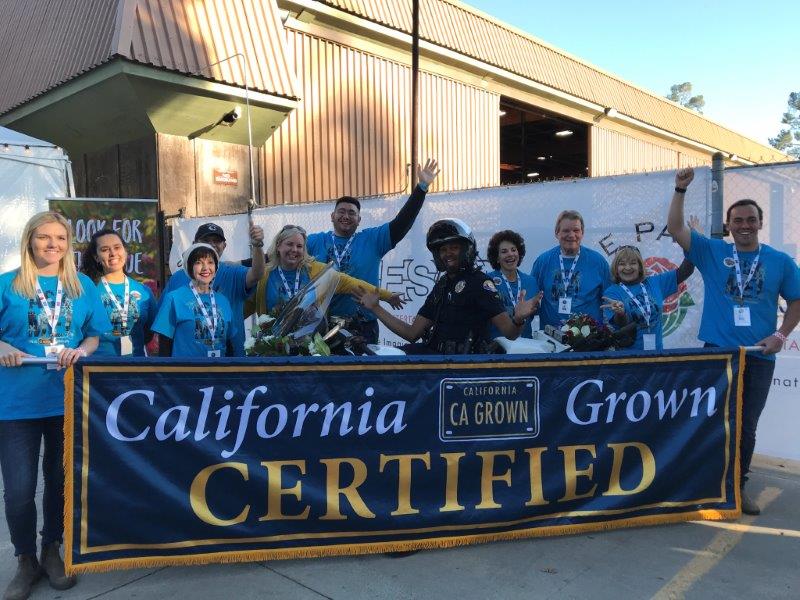
It was an honor to certify the Wells Fargo Stagecoach for a carriage adorned in brilliant California Grown roses. It was also an honor to meet with David Eads, CEO of the Pasadena Tournament of Roses, and the Pasadena Police Department to certify its motorcade entry as California Grown.
In a very special celebration, we visited the Valley Hunt Club, founder of the Rose Parade, and certified its carriage as California Grown. The Valley Hunt Club partners with the Leyendekker family, dairy farmers from Visalia who provide the carriages – yet another example of California agriculture partnering to bolster time-honored traditions!
The floral company FTD has also been adorning parade cars with California-grown flowers for decades, so certifying their entries as California Grown is a natural step, and a pleasure.
We ended the day by watching the judging of the Cal Poly float, “Aquatic Inspirations.” The student team sat in silent anticipation as the judges noted each intricate detail of their design – from mushrooms that served as barnacles to orange slices that created part of a jellyfish hood. This incredible float showcased the bounty of California agriculture! When the judging bell rang, signaling the end of the competition, the students burst into cheers and tears – a demonstration of their hard work and effort!
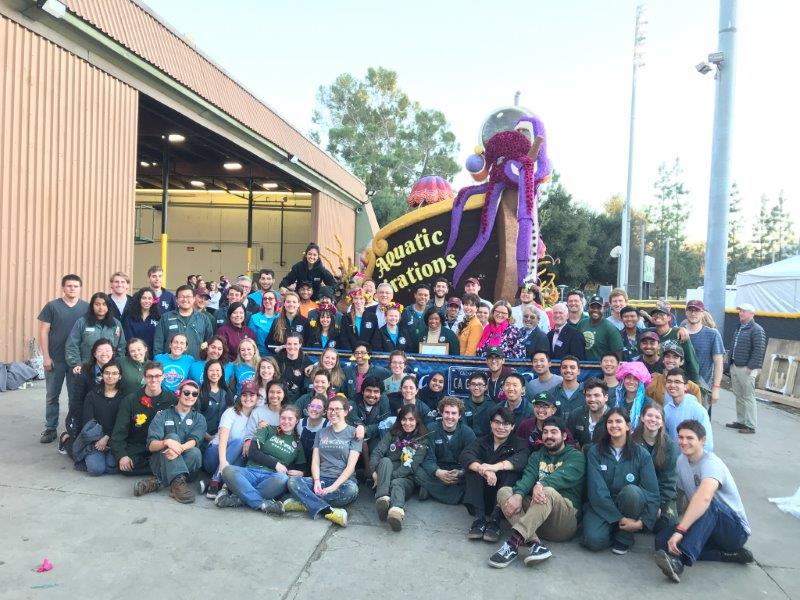
Students from both Cal Poly campuses (San Luis Obispo and Pomona) began planning the float last February, spending the spring and summer designing, engineering and building it. They partnered with California flower farmers, who generously donated flowers. But most importantly, they worked as a team in decision-making and execution. Their talent, their commitment, and their stellar teamwork inspire me and make me excited to have them lead us into the future. Their hard work paid off! They learned on Wednesday (Jan 1) that they won the Director award for most outstanding artistic design and use of floral and non-floral materials!
To all the California Grown entries: Thank you for showcasing California Grown flowers in such a stunning way!
To the California Cut Flower Commission and California flower farmers: Thank you for generously donating tens for thousands of flowers and for your partnership with the great legacy of the Rose Parade and for your commitment to California Grown. Thank you for sharing the beauty of this state with the world.
To all that made the Rose Parade possible, especially the flower growers, the florists and community members that volunteered their time and energy: Thank you for setting an example of the beautiful things that happen when people come together to work on something bigger than themselves.
It was an honor to participate in the incredible tradition that is the Rose Parade and certify so many entries California Grown – and all that California agriculture stands for.
As we celebrate the new year and the beauty of a new decade, I look forward to the bright future of agriculture in California.
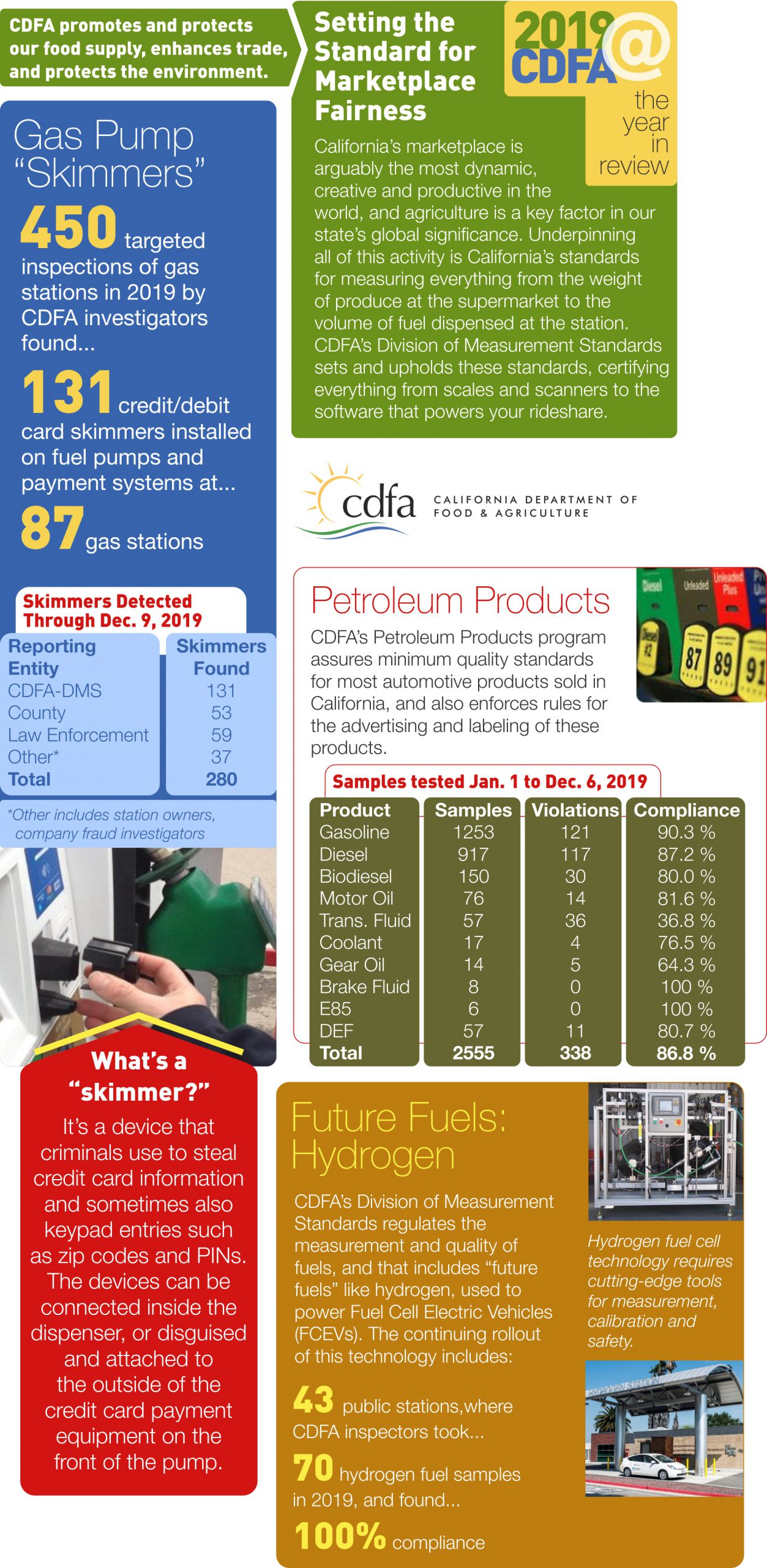
Throughout the country, those who grow our food are grappling with water in changing climate.
By Page Buono
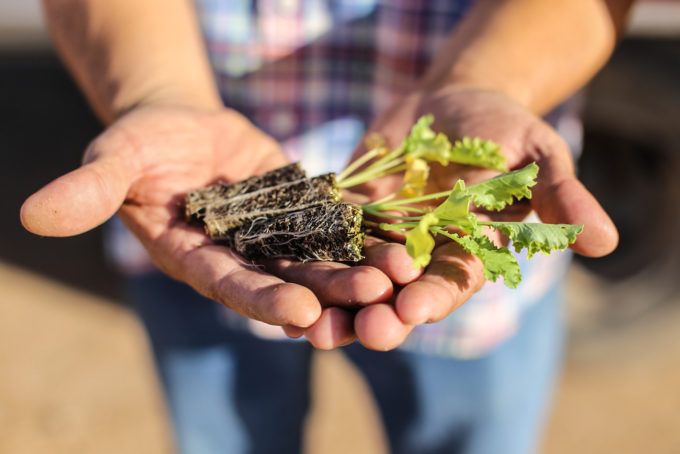
Water connects us across generations, cultures, geographies. And, though we may often forget, water also connects us across tables. We need water. Food, needs water. The production of one apple requires 18 gallons. A 1/3-pound hamburger is 660 gallons of water in the making. One slice of bread takes 11. (Source) Trace those vital drops back to the store, the trucks, the fields. Trace them back far enough and, almost inevitably, you will wind up at a river.
Throughout the country, producers of our food are grappling with the impacts of warming temperatures, back-to-back drought, and increasing demand on over-allocated resources, squaring up against the harsh reality that land is worthless without water.
But as is often the case, scarcity in this way also drives innovation. People who do the hard and beautiful work of growing food for their communities, and for the world, are some of the first to imagine what a new relationship to our food, and the water and rivers we need to grow it, might look like.
SONORA RISING
Sonora Rising from American Rivers on Vimeo.
Water is life. And bread is a living food. In the Sonoran Desert of Tucson, Arizona, third-generation farmer Brian Wong and Don Guerra of Barrio Bread work closely with the director of Tucson Water to imagine, and realize, a sustainable circle for growing heritage, heat-tolerant wheat; producing, selling, and educating local communities about their food; and using a model of recharge and recovery to improve the long-term sustainability of a thriving city in the Sonoran desert.
LECHE Y MIEL (MILK & HONEY)
https://www.facebook.com/AmericanRivers/videos/10158451089210291/
People who grow food for the nation rely deeply on water from the Lower Colorado River to fuel and feed their faith, their families, and the livelihoods they build cultivating the country’s primary source of salad. The future of America’s Most Endangered River® of 2017 is also the future of the people who live and work in Yuma, Arizona, and the need to protect it is imminent.
ALICE’S GARDEN
https://www.facebook.com/AmericanRivers/videos/10159401082920291/
In Milwaukee, Venice Williams works through a community garden to reconcile a complicated relationship with the Milwaukee River. The 2-acre farm where Williams works is called Alice’s Garden, and it was a critical stop for the underground railroad. Though the Milwaukee River once provided refuge and life and nourishment, disguising the scent of freedom seekers on the run and quenching thirst, it has also been a place of segregation and divide, welcoming people with means on river paths and excluding others. Using food and the water it needs to educate and connect people, Williams builds bridges back to a tradition of growing food, and to a future where the river is as vital, and as shared, as ever.
WALT
For decades, Walt Shubin has tracked the weather, rainfall, and the level of his well on his raisin farm near Fresno, California. Between 2005 and 2014, that well has dropped 19 feet. In the final nine months of 2014, it dropped another 19 feet. Walking the dry river banks of the once “mighty San Joaquin”, Walt contemplates a future of farming without the aquifer, and the free-flowing river so critical to its existence.
A RIVER’S RECKONING
Paul Bruchez was guiding a fishing trip when the river literally dropped before his eyes. And while his clients were on his mind, it was his families’ 5th generation roots in agriculture and their dependence on the river, that came into sharp focus. Water weaves its way through the Bruchez family, and the Upper Colorado River they rely on is the pulse and breath of the valley they call home. But changes in conservation weren’t happening fast enough, and the problem of water shortages isn’t one that the Bruchez family could solve alone—it spanned the miles-long reach of the river. This realization spawns a unique coming together of producers working to redefine the relationship between the river, and the food families living along its banks work to produce.
***
Through these and other films, American Rivers works to find and share the stories that dissolve barriers and bring us together to break bread, if we’re lucky, at the river’s edge.
Page Buono is a creative writer working with the Colorado Basin team to tell important stories about rivers across the Southwest. She has a B.A. in Environmental Journalism and Spanish from Western Washington University and an MFA in nonfiction writing from the University of Arizona.
See the original blog post on the American Rivers site here.
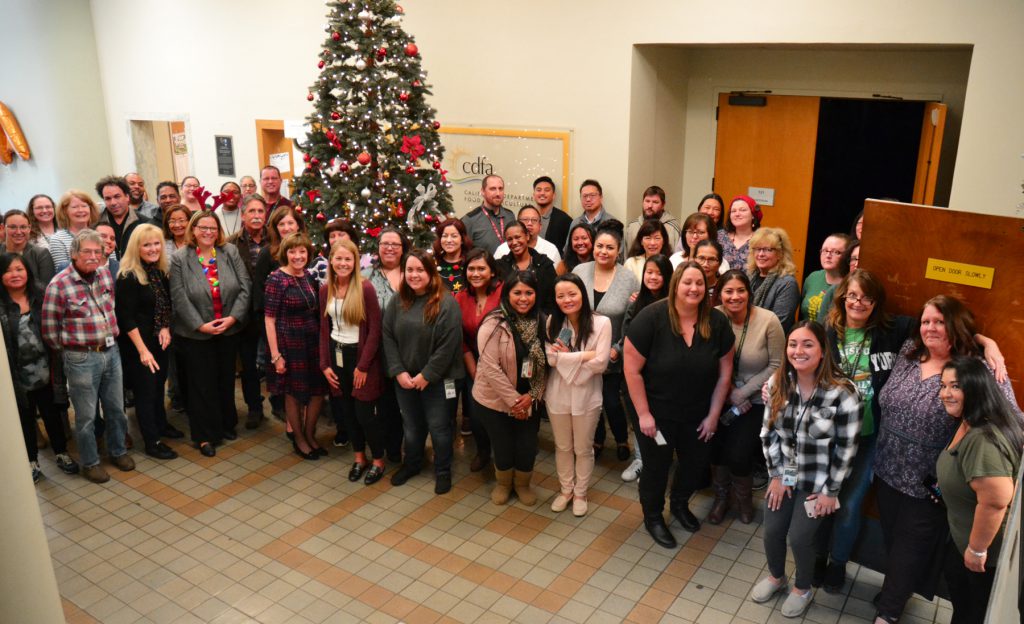
2019 was a year of celebration and reflection at CDFA, as we observed our centennial and looked back at 100 years of accomplishments and milestones. As CDFA Secretary Karen Ross and her senior staff made the rounds to Sacramento-area offices and facilities this week, they passed on personal wishes for the season as well as simple, sincere “thanks” for all of the hard work the department has done this past year for California’s farmers and ranchers, and for the broader agricultural community.
Secretary Ross also looked forward to 2020 as “a year of clarity” (get it? 20-20?) and further accomplishment for CDFA and the industry it promotes and protects.
May your holidays be filled with family and friends, may your table be filled with all that California’s bounty has to offer, and may your hearts be filled with anticipation for the coming year.
